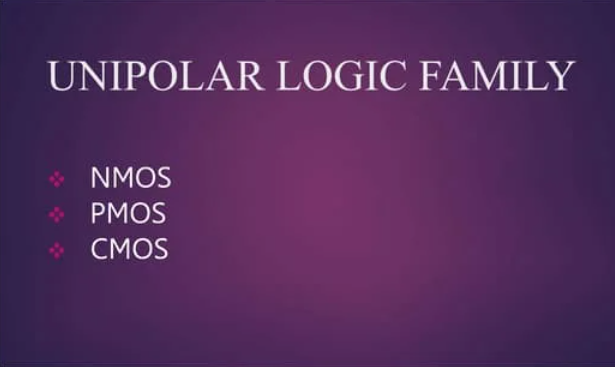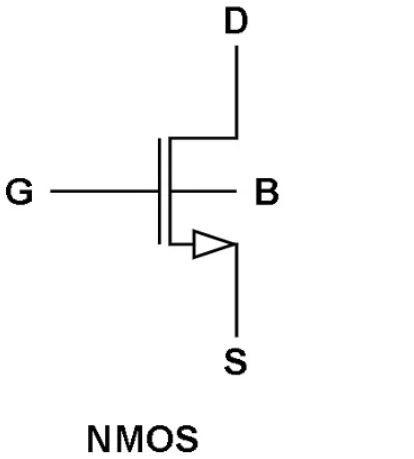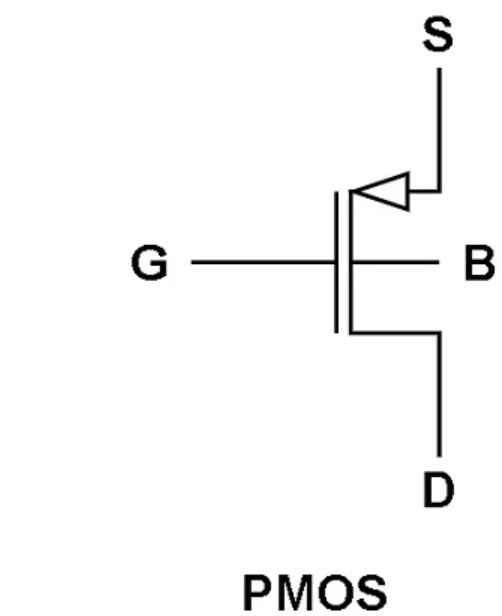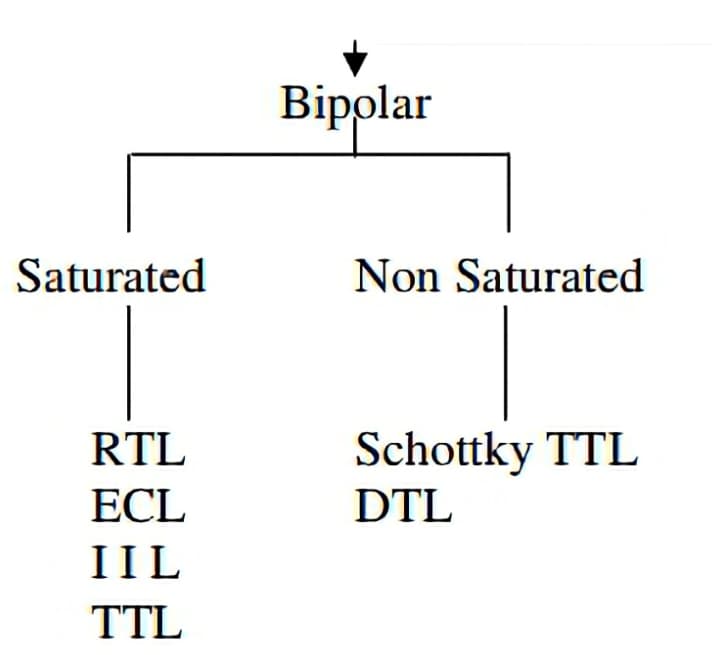Comprehensive Overview of Logic IC Families and Technologies
In the ever-evolving landscape of digital electronics, the selection and application of logic families form the cornerstone of integrated circuit design. These families, each characterized by specific operational and technical nuances, play a major role in the development and optimization of digital systems. The article provides an in-depth exploration of various logic families, including Complementary Metal-Oxide-Semiconductor (CMOS), Transistor-Transistor Logic (TTL), and Emitter Coupled Logic (ECL), examining their distinct properties, applications, and the inherent trade-offs associated with their use. By dissecting the operational principles of unipolar and bipolar logic families, and emphasizing the technological implications of their characteristics such as operating speed, power dissipation, noise immunity, and fan-out capabilities, the article sheds light on the serious decision-making process involved in selecting the appropriate logic family for specific applications.Catalog

Figure 1: Logic Families
Basics of Logic Families
Logic families are suitable in digital circuit design, comprising groups of integrated circuits (ICs) that operate with compatible logic levels and power supply requirements. These ICs enable the creation of ultimate logic gates, such as AND, OR, NOT, NAND, and NOR, which are suitable for performing basic digital operations.
Logic families are classified based on their logic levels, which can be either positive or negative. In positive logic, a low voltage represents a logical '0,' and a high voltage represents a logical '1.' This configuration means that the system is "ON" when high voltage is applied and "OFF" at low voltage. Conversely, in negative logic, a high voltage corresponds to a logical '0,' while a low voltage represents a logical '1,' effectively reversing the ON and OFF states compared to positive logic.
The construction of logic families relies on semiconductor technologies that use diodes and transistors as key switching components. Diodes function in two states: they conduct (ON) when forward-biased and do not conduct (OFF) when reverse-biased. Transistors, which have three terminals—the collector, base, and emitter—control the flow of current between the collector and emitter based on the voltage applied to the base. This switching mechanism allows transistors to alternate between conducting and non-conducting states.

Figure 2: Unipolar Logic Families
Mechanics of Unipolar Logic Families
Unipolar logic families are basic in semiconductor technology, utilizing just one type of charge carrier—either electrons or holes—for their operation. These families are noteworthy in the development of digital circuits, with Metal-Oxide-Semiconductor (MOS) technologies, particularly Complementary MOS (CMOS), standing out for their efficiency and reliability.

Figure 3: NMOS Transistors
At the core of unipolar logic families are NMOS and PMOS transistors. NMOS transistors use n-type dopants in their gate regions. When a positive voltage is applied to the gate, the NMOS transistor becomes conductive. This conductivity is highly efficient because electrons, the charge carriers in NMOS, move faster than holes.

Figure 4: PMOS Transistor
On the other hand, PMOS transistors are doped with p-type materials and conduct when a negative voltage is applied to the gate. Although holes, the charge carriers in PMOS transistors, are slower than electrons, they offer better noise immunity, making PMOS transistors valuable in environments with high interference.

Figure 5: CMOS Technology
CMOS technology integrates NMOS and PMOS transistors in a way that enhances power efficiency and simplifies circuit design. By combining these two types of transistors, CMOS circuits can perform logic functions without the need for pull-up resistors, which reduces both circuit complexity and power consumption. CMOS technology's advantages—such as low power consumption, cost-effectiveness, high reliability, and strong resistance to noise—make it ideal for battery-powered devices and environments where noise immunity is serious. However, CMOS circuits do have some limitations. They are sensitive to voltage fluctuations and are particularly vulnerable to electrostatic discharge, which can lead to performance issues or even damage the circuit over time.

Figure 6: Bipolar Logic Families
Role of Bipolar Logic Families in Modern Electronics
Bipolar logic families are a foundational technology in digital circuit design, using both types of charge carriers—electrons and holes—to perform logic operations. These families rely on key semiconductor components like diodes and bipolar junction transistors (BJTs). The behavior of BJTs in these circuits defines two main categories: saturated and non-saturated logic families.
Saturated Logic Families: such as Transistor-Transistor Logic (TTL), Diode Transistor Logic (DTL), and Resistor Transistor Logic (RTL), operate by driving BJTs into deep saturation. This saturation ensures robust noise immunity and stable switching performance, making these families ideal for environments where maintaining signal integrity is demanding. For example, TTL is widely used due to its simple design and reliable operation across diverse conditions. However, the trade-off for this noise immunity and reliability is higher power consumption. When BJTs are fully saturated, they draw more power, which can be a disadvantage in applications where energy efficiency is risky, such as in portable or battery-powered devices.
Non-Saturated Logic Families: including Emitter Coupled Logic (ECL) and Schottky TTL, avoid driving BJTs into full saturation. Instead, they operate within the active or linear regions of the transistors. This approach significantly reduces power consumption and enhances switching speeds, making these families particularly well-suited for high-speed computing and other demanding digital applications.

Figure 7: Emitter Coupled Logic (ECL)
ECL stands out for its ability to achieve extremely fast switching speeds. With minimal propagation delays and low voltage swings, ECL is designed for high-performance computing tasks where fast data processing and quick response times are important. Its speed and precision make it the preferred choice in applications that demand top-tier performance, such as advanced computing systems.

Figure 8: Schottky TTL
Schottky TTL improves upon traditional TTL by incorporating Schottky diodes, which prevent the BJTs from entering full saturation. This design innovation allows for faster switching times, making Schottky TTL an excellent option for high-speed digital circuits that require both quick responses and efficient power usage.
Features of Different Logic Families
The effectiveness of a logic family is determined by several key characteristics, each influencing the performance and reliability of digital circuits.
|
Features of Different Logic Families |
|
|
Operating Speed |
One of the gravest characteristics is
operating speed, which measures how quickly a logic gate can change its
output in response to a change in input. This speed is used for applications
where fast processing is required, as it directly affects the overall
performance of the circuit. |
|
Fan-In and Fan-Out |
Fan-in refers to the maximum number of
inputs a single logic gate can handle. A higher fan-in allows for more
complex logic operations within a single gate, enabling more sophisticated
circuit designs. On the other hand, fan-out indicates how many other gates a
single output can effectively drive. This is substantial for maintaining
signal integrity when a single gate's output needs to connect to multiple
inputs. |
|
Noise Immunity |
Noise immunity is a measure of how well a
circuit can withstand electrical disturbances without altering its operation.
High noise immunity is required in environments with a lot of electrical
noise, as it ensures that the circuit remains reliable and functions
correctly despite potential interference. |
|
Power Dissipation |
Power dissipation is another dynamic
characteristic, encompassing both static and dynamic components. Static
dissipation occurs due to the voltage applied across the gate, even when no
switching is happening. Dynamic dissipation, however, arises from the actual
switching activity within the gate and is influenced by how frequently the
gate operates. Managing power consumption ensures energy efficiency, reduces
heat build-up and extends equipment life. |
How Do Logic Families Differ?
TTL (Transistor-Transistor Logic): is known for its durability and reliable performance. It offers a moderate propagation delay, which means it can switch states at a reasonable speed. This makes TTL a strong choice for legacy systems and testing equipment, where consistent performance under diverse conditions is beneficial. Its robustness allows it to handle varying environmental factors effectively, ensuring dependable operation over time.
CMOS (Complementary Metal-Oxide-Semiconductor): stands out for its extremely low power consumption and excellent noise immunity. These features make CMOS ideal for battery-powered devices and applications where energy efficiency and stable operation are serious. The minimal power draw not only extends battery life but also reduces heat generation, which is beneficial in compact or portable devices. Additionally, CMOS circuits perform reliably in environments with significant electrical noise, maintaining consistent operation.
ECL (Emitter Coupled Logic): is distinguished by its exceptionally fast switching speeds. This characteristic makes it the preferred choice for high-speed computing and telecommunications systems, where rapid data processing and transmission are dynamic. ECL’s design minimizes propagation delay, allowing it to operate at very high speeds, which is suitable in applications that demand quick and efficient data handling.
Pros and Cons of Various Logic Families
CMOS: is highly valued for its excellent power efficiency and strong resistance to electrical noise, making it ideal for low-power and noise-sensitive applications. It’s particularly well-suited for battery-operated devices where extending battery life and maintaining stable operation are major priorities. However, CMOS tends to operate at slower speeds compared to other logic families like TTL and ECL, which can be a limitation in scenarios requiring high-speed processing.
TTL: is known for its robustness and reliability. It offers good resistance to electrical damage, making it durable in various conditions. In addition, TTL’s compatibility with different logic families makes it versatile, especially in integrated system environments where multiple logic types need to work together seamlessly. However, TTL consumes more power than CMOS, which can be a disadvantage in energy-sensitive applications. Likewise, it can be affected by temperature fluctuations, potentially compromising its reliability in extreme conditions.
ECL: excels in situations that demand extremely fast operational speeds, such as high-speed computing and telecommunications. Its performance is consistent even under varying temperature conditions, making it reliable in demanding environments. However, ECL’s high power consumption can be a significant drawback, particularly in applications where energy efficiency is serious. As well, its lower noise immunity makes it less suitable for environments with significant electrical interference.
Uses of Logic Gates in Technology
Logic gates are ultimate to numerous fields and technologies, with each logic family offering specific advantages that make them suitable for particular applications. Analyzing these applications helps highlight how digital logic enhances the capabilities and performance of modern systems.
|
Uses of Logic Gates in Technology |
|
|
CMOS |
CMOS technology is extensively used in
devices where low power consumption and high stability are serious.
Microprocessors, automotive electronics, and medical devices often rely on
CMOS because it ensures efficient energy use and dependable operation. This
makes CMOS ideal for applications where conserving energy and maintaining
reliability are required, such as in battery-powered devices and life-saving
medical equipment. |
|
TTL |
TTL technology is commonly found in
industrial environments, especially in plants that use legacy systems. It is
also widely used in testing instruments. TTL's durability and compatibility
with older technologies make it a practical choice where long-term system
reliability and easy integration with existing systems are a must. Its
continued relevance in these settings is a testament to its robust design and
adaptability. |
|
ECL |
ECL is the go-to choice in areas that
demand ultra-fast processing speeds, such as high-speed computing, military
operations, and aerospace technology. ECL’s ability to switch states quickly
and its low sensitivity to temperature changes are substantial benefits in
these high-performance environments. This makes ECL requisite in applications
where rapid data processing and consistent operation under varying thermal
conditions are used, such as in advanced computing systems and
mission-perilous military hardware. |
Conclusion
The comprehensive analysis of logic families as detailed in the article underscores their serious importance in the design and functionality of digital circuits. By digging into the specifics of CMOS, TTL, and ECL, the discussion brings to the forefront the strategic considerations required for optimizing digital system performance across various applications. The juxtaposition of different logic families reveals a landscape where technological choices are dictated by a balance of speed, power efficiency, and environmental robustness, each suited to particular operational contexts.
As digital technologies continue to advance, the selection of appropriate logic families remains a dynamic and basic challenge, requiring a nuanced understanding of both the capabilities and limitations of these fundamental components. The exploration of their applications—from powering microprocessors to enabling high-speed telecommunications—illustrates not only the versatility of these technologies but also their evolving role in shaping the future of digital electronics. Considering these principles and trade-offs is requisite for engineers and designers seeking to innovate and improve the next generation of electronic devices.
Frequently Asked Questions [FAQ]
1. What is the explanation of logic families?
Logic families are groups of electronic logic gates that have similar electrical characteristics and use the same technology. These families differ mainly in the type of technology used to create the gates, their operating speeds, power consumption, and compatibility with other components.
2. What are the logic chip families?
There are several major logic chip families, each defined by their specific circuit technology:
TTL (Transistor-Transistor Logic): Uses bipolar transistors for its gates.
CMOS (Complementary Metal-Oxide-Semiconductor): Utilizes both NMOS and PMOS transistors, offering high noise immunity and low power consumption.
ECL (Emitter-Coupled Logic): Known for its high speed, using bipolar transistors.
MOS (Metal-Oxide-Semiconductor): Includes NMOS and PMOS, primarily used before CMOS became more favorable due to its lower power requirements.
3. What is logic families PDF?
A "Logic Families PDF" typically refers to a document or a datasheet that provides detailed information about different logic families. These documents include descriptions of their characteristics, applications, advantages, and limitations. They are valuable for engineers and designers selecting appropriate logic families for their electronic circuits.
4. What are the basic concepts of TTL ECL MOS and CMOS?
TTL: Uses bipolar junction transistors. It's characterized by moderate speed and power consumption and is often used when noise is not excessively high.
ECL: Utilizes differential amplifiers, making it the fastest logic family and the one with the highest power consumption. It's suitable for high-speed computing where timing is serious.
MOS: Employs metal-oxide-semiconductor field-effect transistors (MOSFETs). It was popular for its simplicity and high input impedance but has largely been replaced by CMOS.
CMOS: Combines NMOS and PMOS transistors to achieve low power consumption, high noise immunity, and moderate speed. It's the most widely used logic family today due to its versatility and efficiency.
5. What is the basic function of the TTL logic family?
The TTL logic family primarily processes digital signals within circuits. TTL devices perform logical operations such as AND, OR, NOT, NAND, NOR, XOR, and XNOR, translating input signals into a defined output based on the logic gate used. TTL is known for its robustness and relatively straightforward implementation in various digital applications.